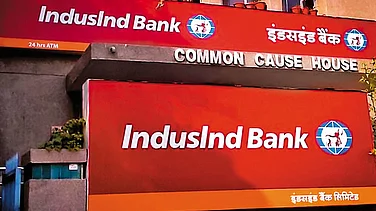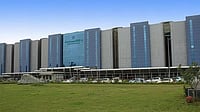Shares of banking players were in the spotlight on April 15, with major heavyweights like HDFC Bank, ICICI Bank, IndusInd Bank and Axis Bank leading gains from the front with their 3-7% surge.
The strong buying action seen across banking names was spurred by a wave of cuts in deposit and lending rates implemented by these players after the recent rate cut by the Reserve Bank of India.
The RBI slashed repo rates by 25 basis points at its latest monetary policy meeting. With this, the central bank has reduced repo rates by half a percentage point cumulatively over two back-to-back policy meetings. Building on that, lenders have also moved in tandem to reduced deposit and lending rates, a move that is expected to boost liquidity in the markets.
The repo rate is the interest rate at which India’s central bank lends to commercial banks. If the repo rate is higher, it will increase the borrowing cost for commercial banks, which then pass on those higher rates to their borrowers. Given that the RBI has now reduced rates, it has given commercial lenders the room to go ahead and trim their deposit and lending rates as well.
Buoyed by these developments, the Bank Nifty index, the gauge to measure the performance of banking stocks jumped 2.5% in trade today. All constituents of the index traded within the green, which helped Bank Nifty post a strong upmove.
Some marquee lenders that have reduced their lending rates include State Bank of India, HDFC Bank, Bank of India, YES Bank and Canara Bank, with most reducing rates by 5-25 basis points.
Looking ahead, global brokerage firm Goldman Sachs painted a positive picture for Indian banks. The firm believes that the “muddle through” scenario for Indian banks could be coming closer to an end, as it sees early signs of improvement in asset quality and operating profitability, despite penciling in 100 basis points of rate cuts.
Goldman Sachs also holds the view that the sector stands much closer to the bottom of the cycle, with cuts to consensus EPS forecasts for FY26-FY27 to end in the first half of FY26.
“In our view, asset quality is approaching an inflection point, with early indicators such as bureau data showing signs of stabilization across most loan segments, particularly in the unsecured category. The exception remains business-banking loans for NBFCs, which continue to face some pressure. We anticipate slippages to begin moderating from the second half of FY26, leading to a corresponding decline in credit costs, in line with our revised, lower credit cost assumptions,” Goldman Sachs wrote in a note.



























